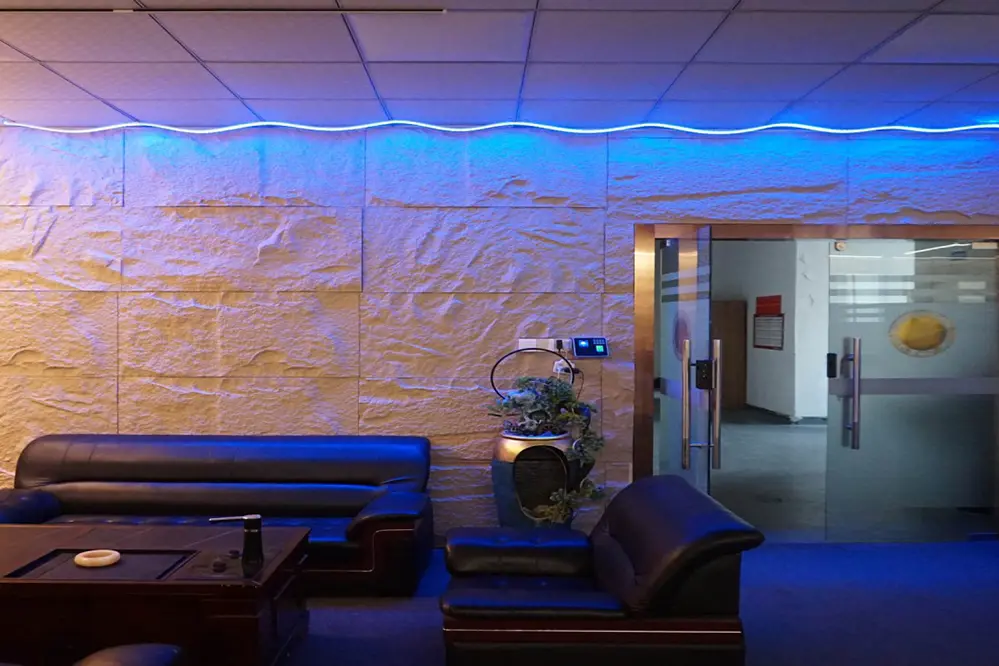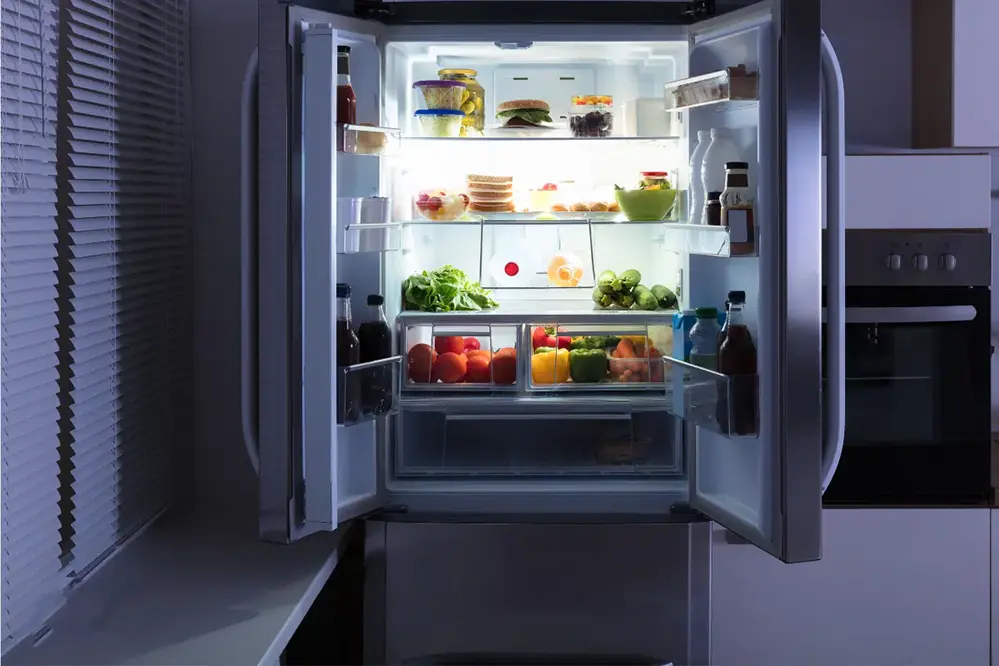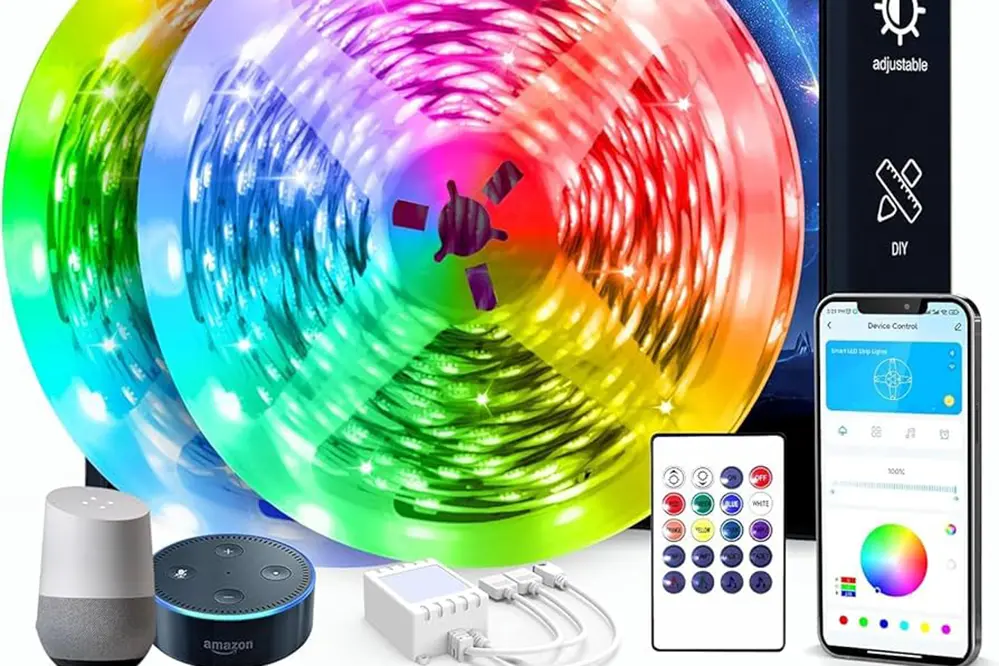Picture this: you’ve just installed your RGB LED strips, ready to bask in a spectrum of colors, but the red color is not working on your RGB LED strips due to a code error. This common frustration can dampen the excitement of creating a vibrant atmosphere.
Addressing this issue is crucial, as it impacts both the aesthetic and functional aspects of your lighting setup, and can be greatly improved with proper color calibration. Fortunately, there are several solutions and insights available to tackle this problem.
In this article, we’ll guide you through troubleshooting steps and expert tips to ensure your RGB strips shine brightly in every hue. Prepare to uncover the secrets to a flawless lighting experience.
Common Causes of RGB Strip Malfunction
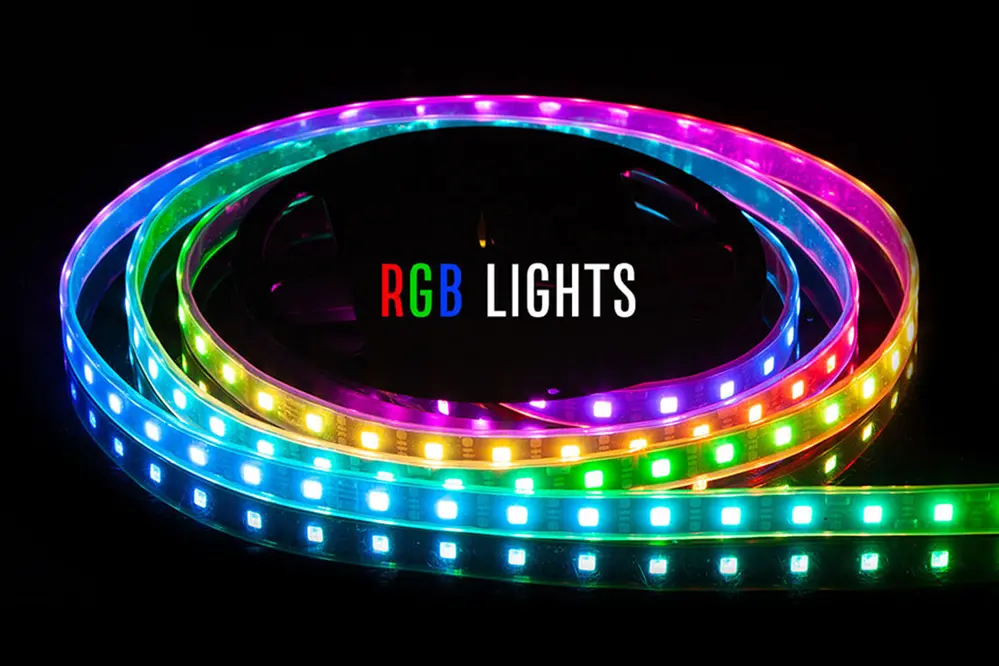
When RGB LED strips experience issues, particularly when the red color is not working on rgb led strips, it can be disheartening and perplexing.
One prevalent reason for such malfunction is a compromised connection between the strip and the controller, which is responsible for the RGB signals. The red wire might be loose or disconnected, preventing the strip from displaying red. Ensuring all connections are firm and secure can resolve this issue and restore vibrant red hues.
Moreover, there might be an issue with a faulty LED chip within the strip itself. If this is the case, the strip may not produce red, even with proper connections. Identifying and replacing the faulty section can rejuvenate the entire strip and allow full-spectrum illumination.
Finally, insufficient power supply can also be a contributing factor to malfunctions where vibrant colors fail to manifest. If the power supply does not meet the strip’s requirements, the red light may be suppressed or eliminated. Upgrading to a power source that aligns with the strip’s specifications can optimize performance, ensuring that the brilliance of every color is not just hypothetical but vividly realized.
Diagnosing the Missing Red Issue
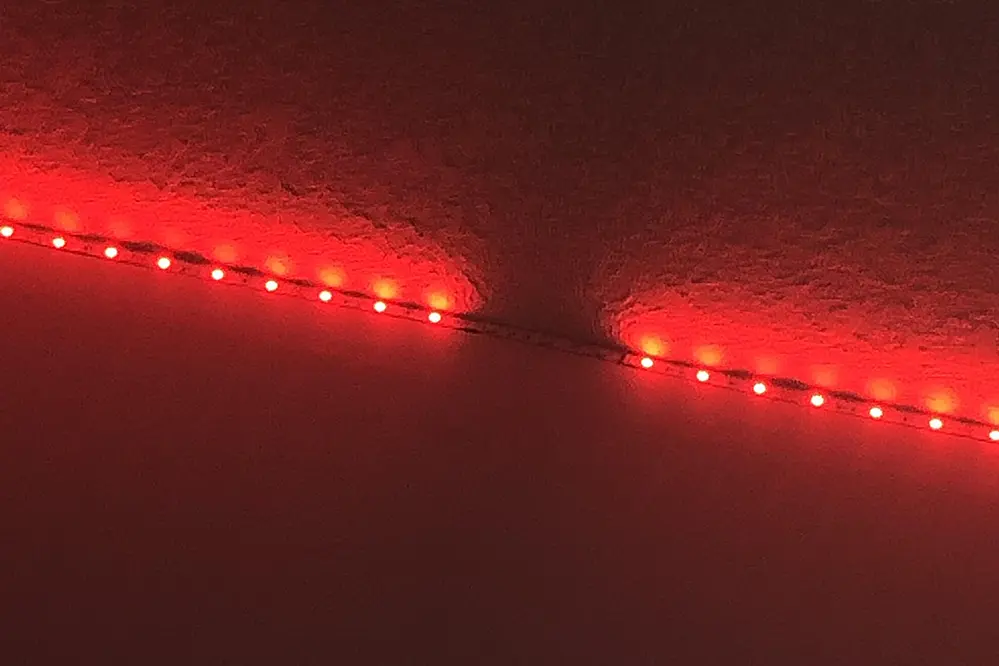
When faced with the red color not working on RGB LED strips, a methodical and analytical approach is crucial. Begin by visually inspecting for any physical damage to the strip or wiring, as these are the most common culprits. If all appears intact, testing with a multimeter can confirm the presence and continuity of the red current. Additionally, swapping the LED strip to a different known working controller or power supply can help isolate the issue, providing clarity and paving the way for a restoration that revitalizes the vibrancy you’re striving for.
Checking the Power Supply
Ensuring that your RGB LED strip is connected to a reliable power source is of paramount importance for maintaining optimal luminosity. Insufficient power can lead to incomplete color displays, including a missing red.
When diagnosing issues with a “red color not working on RGB LED strips,” start by examining the power supply’s specifications. It must match the strip’s voltage and current requirements.
Proper voltage and current flow can enhance the longevity and performance of your RGB LED strips significantly.
Next, measure the output of the power supply using a multimeter. If discrepancies occur between expected and actual outputs, replacing it with a suitable power source might be essential. This step ensures not only restoration of full color spectrum but also efficiency and brilliance. Such meticulousness pays off, contributing to the perfect ambiance.
Inspecting the LED Strip Connections
Once you’ve confirmed that the power supply aligns with the RGB LED strip’s needs, shift focus to the strip’s connections. These connections, if disrupted, can hinder the red color’s display, undermining the desired aesthetics and atmosphere of your setup.
Start by gently examining each of the connections along the strip to spot any visible issues. Breaks, bends, or corrosion can interrupt the flow of power to the strip, which may specifically affect the red channel.
Carefully disconnect and reconnect the strip from its power source, ensuring firm and proper alignment. Steady connections allow the full spectrum of colors to shine brightly and consistently.
Next, pay attention to the solder joints where wires connect to the strip, which are crucial areas. Unstable joints may break under stress, especially affecting sensitive channels like red.
Using a magnifying tool, inspect these joints for cracks or cold solder. If found, a careful re-soldering can restore the connection, revivifying the rich red tones essential to your lighting scheme.
With thorough inspection and precision adjustments, the magical glow of vibrant hues awaits. The path to brilliance is through detailed diligence, a rewarding journey towards a colorful transformation.
Testing RGB Controller Functionality
To ensure your RGB LED strips are aglow with vibrancy, evaluating the controller’s role is crucial. Test its operational integrity by checking the mode settings and connectivity with the strips.
Begin by verifying that the controller is properly synchronized and that the settings allow for full-spectrum illumination. This alignment will illuminate potential issues where red color might falter or fade.
Explore different settings and modes to identify specific inconsistencies or failures in the red channel.
Verifying Controller Settings
A misaligned controller setting is a common culprit for the red color not working on RGB LED strips. Ensure each hue setting corresponds to its respective strip channel, as this can often illuminate issues.
When verifying settings, gently cycle through preset programs to check red brightness. Some settings may inadvertently override red, leading to missing or muted colors.
Consider resetting the controller to its default settings, ensuring every aspect of the RGB strip is reset and accounted for as designed. This basic yet effective step might restore the dynamic red glow that enriches any space.
Exploring advanced settings may also uncover potential discrepancies. In some instances, reconfiguring setting parameters or updating controller firmware to the latest version can solve longstanding issues. Enthusiastically embrace these diagnostic challenges, knowing that each hurdle overcome brings you closer to a vibrant, fully-kaleidoscopic display. Let persistence drive your pursuit of vibrant, radiant colors.
Trying a Different Controller
Sometimes, the problem with the red color not working on RGB LED strips may lie with the controller or its code itself. This revelation can be a turning point for many users.
First, consider swapping your current controller with a different one known for reliability, possibly owned by a friend or purchased as a trusted recommendation.
Verify the compatibility of the new controller with your specific RGB LED strip setup. A mismatch in specifications can lead to inconsistent behavior.
Carefully plug in the new controller, ensuring all connections are secure, as even minor disconnections can disrupt performance.
It is possible that the original controller might have hardware issues affecting the red channel. By trying a different controller, you can confirm whether the problem persists or if it’s resolved. Revelations such as these can guide your next steps toward an illuminating solution.
Discovering that your old controller was the issue might feel like finding a missing puzzle piece. Empowered by this newfound knowledge, continue pursuing your quest for the vibrant red hues and seamless color transitions you envision.
Analyzing the Red Color Circuit
Embarking on the analysis of the red and blue color circuits, a cornerstone of troubleshooting begins with systematic investigation, ruling out basic glitches. Examine whether the input voltage reaching the red LED section aligns with the specified requirements, which can be done using a multimeter. A deficit in voltage may impede the red diodes from illuminating properly. Inspect the red channel’s pathway for any potential discontinuities that could arise from soldering imperfections or trace corrosion. With empathy for your LEDs, an inquisitive approach and the right tools can unravel the nuances of this challenge, setting you on a path to reclaiming the vibrant colors your projects deserve.
Examining the Wiring for Faults
When faced with the red color not working on RGB LED strips, closely scrutinizing wiring can reveal underlying issues.
- Inspect connections: Ensure each connector is firmly plugged into its corresponding port.
- Look for frayed wires: Damaged wires might interrupt electrical flow, affecting color output.
- Check solder joints: Poorly soldered connections may not transmit the necessary current to power all colors.
- Verify wire sequence: Confirm that wires are correctly aligned to the RGB layout.
Addressing these aspects can often restore full functionality to your RGB strips.
Proper investigation of wiring faults can significantly enhance the performance and lifespan of your RGB setup.
Using a Multimeter for Testing
To diagnose why the red color might not be working on RGB LED strips, employing a multimeter is an invaluable step. This tool can help identify electrical inconsistencies that could impede the functionality of your LEDs.
Begin by setting your multimeter to measure voltage. This allows you to confirm whether there is a voltage drop preventing sufficient power from reaching the red LED section.
Testing each segment of the strip ensures pinpoint accuracy in determining the problem’s source, providing you with a clear indication of whether voltage discrepancies exist. A proper examination with the multimeter ensures that the connections, continuity, and power distribution throughout the strip are sound, removing uncertainty.
Armed with a multimeter, you gain the ability to explore if the issue lies in the strip itself or the accompanying power source. It’s prudent to compare readings across all RGB channels; any drastic variances could guide you towards the root of the red color malfunction. Hence, confidently using this tool can be the key to unveiling and rectifying the concealed issues, rekindling the brilliant glow that makes RGB LED strips so captivating.
Identifying Damaged LED Components
An investigation of damaged LED components might reveal why the red color is not working on RGB LED strips. First, inspect each LED along your strip for any signs of physical damage, such as cracks, discoloration, or non-functioning segments, as these symptoms often point to where repairs are necessary.
Successfully identifying such defects empowers you to execute targeted repairs, efficiently restoring your strip’s vibrant display with renewed ease and assurance.
Visually Inspecting LEDs
Your journey begins with inspection.
Visually examining the RGB LED strip is the first step towards identifying why the red color is not working. This investigation involves scrutinizing each LED for overt indications of malfunction, such as tiny cracks, dimming, or entirely dark sections. Occasionally, the issue may appear subtle yet persistent, necessitating keen observation to detect misbehaving or faintly glowing reds.
Look for irregular scattering of light.
Such signs might indicate a malfunction at play – an anomaly possibly rooted in a shallow solder or a loose connection within the strip – thus sparking insights towards pinpointing the fault.
This diligent examination complements our technological quest, advocating enhanced insight and empowerment to conquer the red color mishap saturating 2023’s innovative lighting arena. These visual cues, though sometimes slight, hold profound potential to reveal underlying defects, enabling transformative strides in resurrecting the full spectrum of brilliance from your LEDs.
Using a Replacement Strip for Comparison
In the pursuit of pinpointing why the red color on your RGB LED strip is not working, using a replacement strip can shed new light on the issue.
Ensure that the replacement strip is known to function properly.
Testing with a new strip provides a benchmark for comparison, allowing you to see if your original strip replicates its color issues. This can be revealing, indicating whether the problem lies within the strip itself or the connected devices such as the power supply, controller, or wiring.
The replacement enables you to comfortably troubleshoot without the ambiguity often associated with technical failures. If the replacement strip shows no “red” issues, consider examining the setup with renewed insight. This vivid contrast allows illumination of persistent questions, guiding you toward not only fixing the problem but also enhancing your confidence in working with technology creatively and strategically.
Investigating Software Settings
Diving into software settings can provide insights into why the red color is not working on RGB LED strips.
In many instances, an overlooked anomaly in a software application might be the root of your RGB woes. Begin by verifying that your LED controller software is installed and updated to the latest version. This ensures all functionalities operate as intended and eliminates mismatched protocol issues. Confirm that any color profiles or schemes within the software are configured correctly. Sometimes a simple misconfiguration may prevent the red channel from being accessed, inadvertently creating your current challenge.
Moreover, check the individual settings related to the RGB outputs. Often, there might be sliders or values specifically governing red, green, and blue outputs separately. Ensuring that the red is not set to zero or at an insignificant intensity can quickly lead to a solution.
Additionally, advanced users can delve into any available software logs or debug tools to unearth detailed insights about what’s occurring behind the scenes. By meticulously analyzing these logs, you can pinpoint discrepancies or even unintended interactions that might block or suppress the red channel’s functionality. This exploration not merely identifies the underlying issue but equips you with enhanced knowledge and confidence to tackle future challenges, fostering growth in your technical troubleshooting capabilities.
Assessing Environmental Factors
Understanding the broader context in which RGB LED strips operate can offer crucial insights for resolving the issue where the red color is not working on RGB LED strips.
Environmental factors such as temperature fluctuations, moisture, and dust accumulation might be influencing the strip’s ability to display the red channel effectively. External conditions are sometimes overlooked, yet they play a fundamental role in the performance and longevity of electronic devices.
It’s not uncommon for extreme temperatures or high humidity to affect the electrical integrity of RGB strips. Moisture, in particular, can lead to short circuits or corrosion, subtly impairing the red diode while leaving other colors unaffected. Dust accumulation can also hamper connections, possibly disrupting signal transmission to the red LED.
Consider the placement of the LED strip. Is it exposed to direct sunlight, causing overheating, or is it situated in a damp area? Reassessing the environment allows you to create optimal conditions that enhance performance. Implementing protective measures, such as sealing strips against moisture or relocating them from overheating zones, can mitigate potential environmental impacts.
Proactively addressing these factors instills confidence, transforming challenges into stepping stones toward mastery of intricate technical systems.
Preventive Maintenance Tips
Regular inspection is a cornerstone of preventing issues with RGB LED strips. By dedicating a few moments each month to examining your setup, you can identify potential problems early.
Ensure the strips are securely adhered and connectors are tightly fastened, minimizing exposure to unwanted elements. Loosely connected components can lead to malfunctions, including the red color not working on RGB LED strips.
Cleaning your RGB strips regularly not only prevents dust buildup but also optimizes light quality and color accuracy. A gentle wipe with a microfiber cloth can remove any particles that might disrupt connections.
Consider investing in a humidity sensor to monitor environmental conditions around your strips. By maintaining a stable environment, you can significantly extend the lifespan of your LED setup and reduce the risk of damage.
Consistent attention and minor adjustments can prevent larger issues, ensuring vibrant, trouble-free lighting.
When to Seek Professional Repair
Sometimes, DIY efforts simply aren’t enough. Occasionally, you encounter a challenge that demands the expertise of a seasoned professional, particularly when dealing with advanced electronic repairs.
For persistent issues where the red color not working on RGB LED strips persists, professional assessment is vital.
Experiencing electrical shorts, unintended flickering, or complete failure requires specialist diagnosis and intervention.
Elaborate setups with multiple strip installations and complex wiring might benefit from expert guidance. Advanced circuitry and complex controllers often require technical know-how.
Should your LED strips still be under warranty, professional repair can help maintain coverage. It’s crucial to avoid unauthorized tampering, which could otherwise nullify this valuable protection.
Ultimately, the goal is to ensure your setup shines brightly, with every hue working in harmony. Professional technicians have the tools and knowledge to make this vision a reality.
Conclusion
When the red color on your RGB LED strips malfunctions, it presents a valuable opportunity to engage professional expertise and uncover the underlying cause. By relying on specialists to navigate the complexities of electronic repairs, you ensure a long-lasting solution that restores the full spectrum of vibrant lighting. This proactive approach not only addresses the immediate issue but also enhances the overall performance and reliability of your RGB setup. Expert intervention guarantees that your lighting system operates seamlessly, meeting and exceeding your expectations for both functionality and aesthetic appeal.
Entrusting your RGB LED strip repairs to professionals secures a future where your lighting performs flawlessly, preserving the visual beauty you desire. This decision instills confidence in the durability and efficiency of your system, ensuring it remains a centerpiece of your environment. By embracing expert guidance, you unlock the potential for a vibrant and dynamic lighting experience that stands the test of time. Let your lighting vision come to life with the assurance that it is supported by comprehensive insight and technical acumen.

